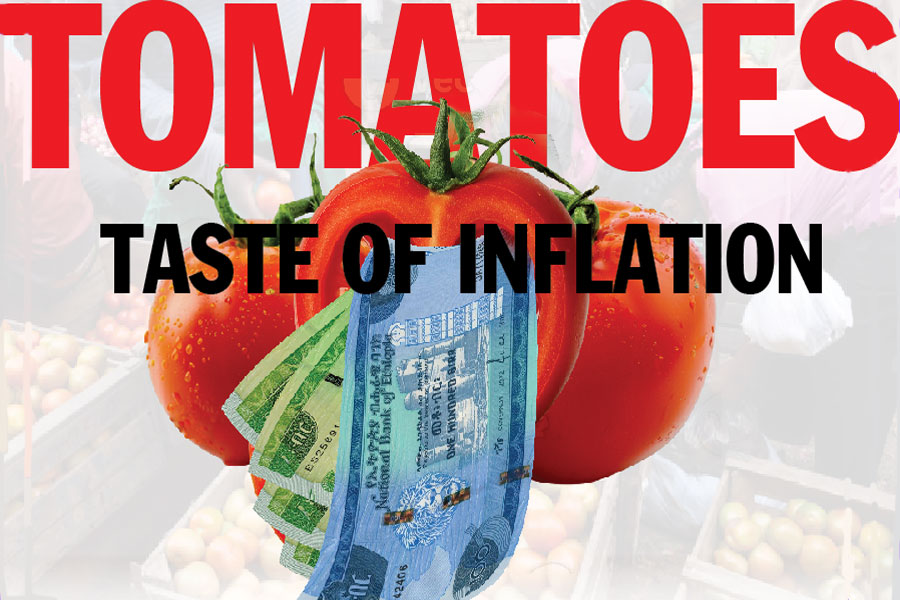
Fortune News | Dec 04,2021
Jul 27 , 2024
By Matias Assefa
The transition to an inflation-targeting lite policy marks a notable shift for Ethiopia’s central bank. It requires a departure from past practices and an adoption of a more forward-looking approach. The National Bank of Ethiopia (NBE) can better navigate the volatile economic environment by focusing on core inflation and improving transparency. Its ability to forecast accurately and communicate effectively will be tested, argues Matias Assefa (matias.assefa@gmail.com), an economic and business analyst based in Addis Abeba.
Two weeks ago, the National Bank of Ethiopia (NBE) introduced a new monetary policy framework, marking a notable shift from a decades-old monetary targeting strategy to an "inflation targeting lite" policy strategy. Spearheaded by the newly appointed governor, it is underpinned by the NBE's medium-term strategic plan, which hopes to bring price stability to Ethiopia’s turbulent economy.
The central tenet of this new regime is the NBE’s overriding objective of price stability, achieved through implementing a benchmark policy interest rate — the national bank rate (NBR). It is also implemented via interbank money market interest rates as the operating target and open market operations as the primary policy instrument.
As the NBE navigates this new terrain, it faces several critical decisions. One of the foremost challenges is determining the appropriate measure of inflation to target. The debate centres on whether to focus on headline inflation, which encompasses all items in the consumer price index (CPI), or core inflation, which excludes certain items with highly volatile prices, such as food and energy.
Historically, the NBE has targeted headline inflation. However, this measure is notorious for its volatility, often influenced by temporary factors that do not reflect the underlying economic conditions. In Ethiopia, where food prices constitute a large portion of the consumption basket — accounting for 54pc of headline inflation — the volatility of these prices presents a particular problem. Temporary supply shocks, such as droughts or conflicts, can cause substantial fluctuations in food prices, impacting the overall CPI.
If the NBE were to react aggressively to these temporary price spikes by raising the policy rate, it risks destabilising the economy. Core inflation, which excludes these volatile prices, provides a more stable and reliable measure, helping to address the effects of supply shocks and better reflecting the actual supply-demand conditions in the economy.
However, choosing which core inflation measure to adopt is not straightforward.
The traditional measure of core inflation excludes food and energy prices from the CPI. Yet, there are instances when other items within the core measure experience price surges. An alternative approach is to exclude items based on statistical criteria, such as those whose prices change by more than a specified percentage point. The choice can also be informed by the measure's ability to forecast headline inflation over a given period.
For the NBE, a reasonable starting point might be to target the standard core measure by excluding food prices, as this would be relatively easy for economic actors to understand and would help guide inflation expectations.
In addition to selecting the appropriate inflation measure, the NBE should enhance its economic forecasting capabilities.
Inflation-targeting regimes require forward-looking and preemptive monetary policy due to the well-known "long and variable" time lags in the effects of monetary policy. To set the NBR effectively, the NBE’s monetary policy committee needs to forecast key variables, including interest rates, commercial banks’ liquidity, inflation, real economic growth, and public spending. This demands the use of sophisticated economy-specific models and state-of-the-art software to process information, as well as an accurate appraisal of risk factors.
While the NBE claims to have the necessary technical capacity, its credibility will be tested when these forecasts meet reality.
Transparency and communication are crucial components of the new policy framework. In the past, Ethiopian monetary policymaking has often been shrouded in mystery, to the economy's detriment. To encourage greater transparency, the NBE should clearly define its inflation target, moving beyond the vague "single digits" goal of the past. The central bank should also make its economic forecasts more transparent through appropriate communication channels, ensuring that the general public and financial markets understand monetary policy decisions.
It is essential to publicise monetary policy committee meetings and decisions on time. The NBE should engage in public information campaigns to educate the public about its role and objectives, emphasising that it is more than just an organisation with a large vault to store cash. Clear communication helps stabilise inflation expectations, promoting economic stability. Enhanced transparency and communication also improve the NBE's accountability to the public and reduce political pressures that may lead to inflationary monetary policy.
It would be difficult for the central bank to pursue policies that contradict societal interests when it is transparent and accountable.
Another critical challenge for the NBE is establishing long-term credibility, which depends on the central bank’s commitment to consistently achieve its inflation targets over time. Building a good track record is essential for reducing inflation expectations, but it requires systematic thinking and continuous monitoring to avoid pitfalls. The NBE could learn from the experiences of neighbouring countries like Kenya and Uganda, which have successfully implemented similar policies.
PUBLISHED ON
Jul 27,2024 [ VOL
25 , NO
1265]


Fortune News | Dec 04,2021

View From Arada | Feb 20,2021

Radar | Apr 03,2021

Fortune News | Nov 30,2019

Fortune News | Jan 25,2020

Radar | Mar 16,2024

Fortune News | Dec 29,2018

Radar | Apr 12,2020

Fortune News | Apr 30,2021

Radar | Jun 15,2019

Photo Gallery | 174012 Views | May 06,2019

Photo Gallery | 164237 Views | Apr 26,2019

Photo Gallery | 154335 Views | Oct 06,2021

My Opinion | 136611 Views | Aug 14,2021
Editorial | Oct 11,2025

Dec 22 , 2024 . By TIZITA SHEWAFERAW
Charged with transforming colossal state-owned enterprises into modern and competitiv...

Aug 18 , 2024 . By AKSAH ITALO
Although predictable Yonas Zerihun's job in the ride-hailing service is not immune to...

Jul 28 , 2024 . By TIZITA SHEWAFERAW
Unhabitual, perhaps too many, Samuel Gebreyohannes, 38, used to occasionally enjoy a couple of beers at breakfast. However, he recently swit...

Jul 13 , 2024 . By AKSAH ITALO
Investors who rely on tractors, trucks, and field vehicles for commuting, transporting commodities, and f...

Oct 11 , 2025
Ladislas Farago, a roving Associated Press (AP) correspondent, arrived in Ethiopia in...

Oct 4 , 2025
Eyob Tekalegn (PhD) had been in the Governor's chair for only weeks when, on Septembe...

Sep 27 , 2025
Four years into an experiment with “shock therapy” in education, the national moo...

Sep 20 , 2025
Getachew Reda's return to the national stage was always going to stir attention. Once...

Oct 12 , 2025
Tomato prices in Addis Abeba have surged to unprecedented levels, with retail stands charging between 85 Br and 140 Br a kilo, nearly triple...

Oct 12 , 2025 . By BEZAWIT HULUAGER
A sweeping change in the vehicle licensing system has tilted the scales in favour of electric vehicle (EV...

Oct 12 , 2025 . By NAHOM AYELE
A simmering dispute between the legal profession and the federal government is nearing a breaking point,...

Oct 12 , 2025 . By NAHOM AYELE
A violent storm that ripped through the flower belt of Bishoftu (Debreziet), 45Km east of the capital, in...